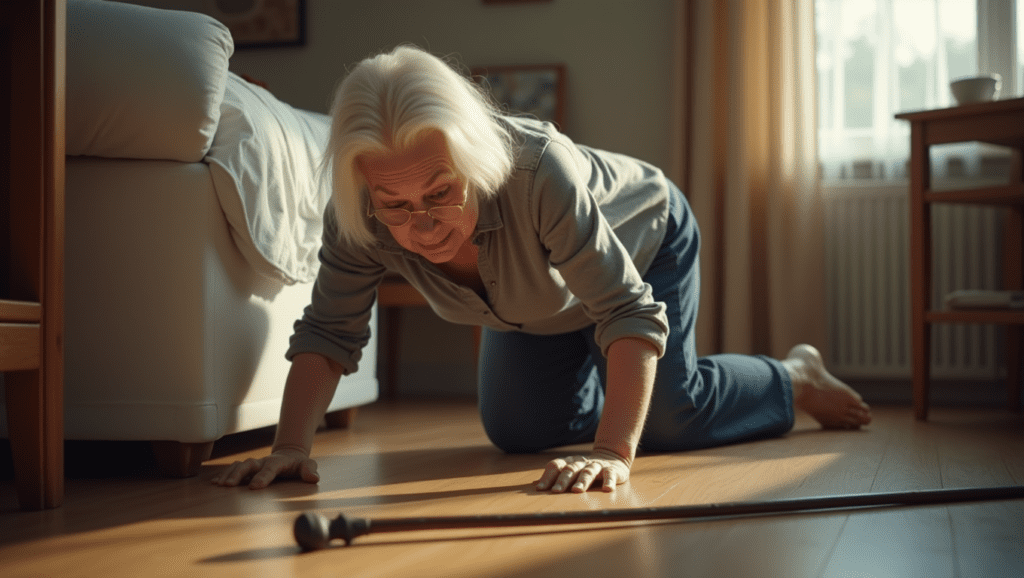By integrating these strategies into the CoolSenior.co.uk platform, we can provide seniors with practical tools to stay safe and reduce their risk of falls using AI-driven technology. These tools offer peace of mind, knowing that help is available when needed, while also helping seniors maintain their independence.
- Wearable Health Trackers:
- Devices like Fitbit or Apple Watch can monitor daily activity, track gait stability, and detect deviations in walking patterns that could indicate a higher risk of falls.
- AI Role: Use real-time data to alert seniors or caregivers if the individual’s gait becomes unstable or irregular.
- Smart Home Sensors:
- Smart cameras and motion sensors placed in the home can detect sudden movements or falls.
- AI Role: These devices can detect patterns (like unsteadiness or inactivity) and issue alerts if a fall occurs or if the person is moving abnormally.
- Fall Detection Devices:
- Devices like Lively Mobile Plus and the Apple Watch SE have built-in fall detection sensors that automatically alert emergency contacts if a fall occurs.
- AI Role: Use AI to analyze pre-fall data (like balance and mobility) and warn seniors of heightened fall risk before it happens.
- AI-Enhanced Walking Aids:
- Smart walking aids can track gait stability and provide feedback if posture or walking balance deteriorates.
- AI Role: AI can recommend corrective walking techniques or alert the user to stop and rest if necessary.
- Smart Flooring:
- Smart flooring systems can detect falls through pressure sensors embedded in the floor.
- AI Role: Use AI to analyze foot pressure patterns and detect uneven distribution, which could predict an imminent fall.
- Voice Assistants for Emergency Calls:
- Devices like Amazon Alexa or Google Assistant can be programmed to call emergency services or family members when a fall is detected.
- AI Role: Voice assistants can monitor activity patterns and remind seniors to move or avoid risky behaviors (like walking in the dark).
- AI-Based Balance Training Apps:
- Apps like Physitrack offer guided exercises for balance and strength improvement.
- AI Role: AI algorithms can tailor exercises based on user performance, gradually increasing difficulty to prevent falls.
- Medication Management Devices:
- Smart pill dispensers like Hero can ensure seniors are taking their medications on time, which is critical since some medications can affect balance.
- AI Role: Use AI to track medication schedules and provide alerts if medication that could impact balance is missed.
- Virtual Reality (VR) Balance Training:
- VR tools can immerse seniors in balance and strength training exercises in a safe, controlled environment.
- AI Role: AI algorithms can adjust the difficulty level based on the senior’s performance, helping to improve stability and reduce fall risk.
- Smart Lighting Systems:
- AI-powered lighting systems like Philips Hue can be set to turn on automatically when motion is detected, preventing trips and falls in poorly lit areas.
- AI Role: The system can learn patterns and automatically adjust lighting based on activity times (e.g., brightening the path to the bathroom at night).
- AI-Powered Bed and Chair Sensors:
- Smart bed and chair sensors can detect when a person is getting up or sitting down and alert caregivers if a fall risk is detected due to unsteadiness.
- AI Role: Predict fall risk based on the speed of movement or signs of dizziness when getting up from sitting or lying down.
- Post-Fall Health Monitoring:
- After a fall, wearable health trackers can monitor vital signs (like heart rate and blood pressure) to check for signs of injury or shock.
- AI Role: AI algorithms can predict complications following a fall and suggest whether immediate medical intervention is necessary.


